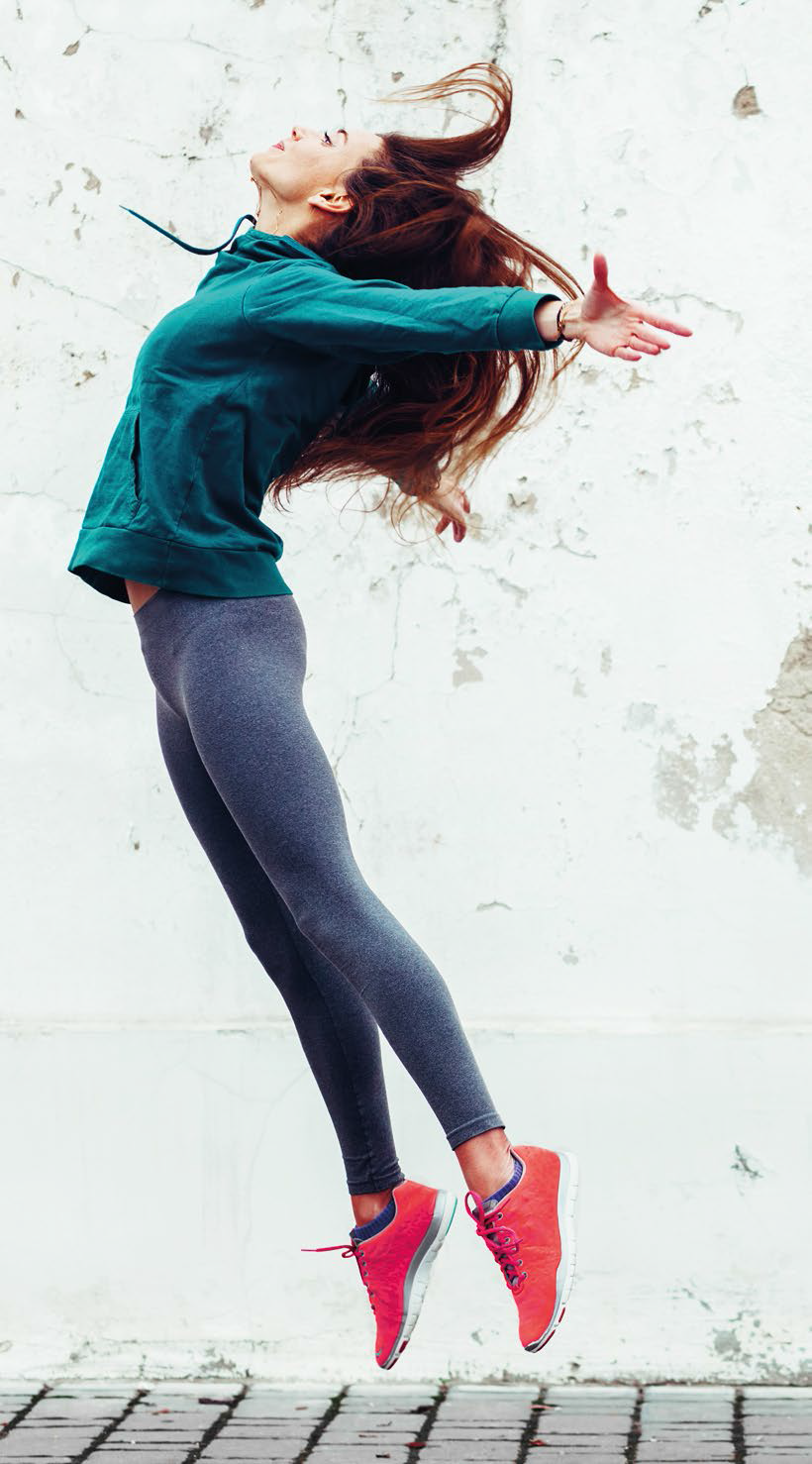Who says you have to go to extremes to get results? Done effectively, every little step you take will help you reach your goal.



So you’ve pretty much tried it all: personal training, F45, Body Bar, Body Pump, spin classes, boot camp… Yet those pesky extra kilos continue to hang around.
To lose weight and keep it off, a few things need to happen. You need to create a calorie deficit (expend more energy than you consume); you need to nourish your body well with good-quality food to assist with the functionality and efficiency of your organs and systems; and you need to gain control over your stress levels and get adequate sleep. The real key is to do all of this consistently.
It just so happens that an early morning walk may have all of the above covered. As well as burning fuel, studies have shown that walking outside while soaking up a few rays of sunlight contributes to an increase in the production of serotonin (a feel-good hormone), which helps us sleep, as it converts into melatonin at night (our sleep hormone). In turn, sleeping well helps regulate cortisol (a hormone produced by our adrenal glands when we’re stressed, and which is implicated in fat storage). Who would have thought that starting the day with a good old-fashioned walk in the park could contribute to all of that?
If you spend the same amount of time doing an activity, your overall calorie expenditure will be greater in the higher intensity session (for example, you’ll burn more energy if you run for an hour than if you walk for an hour). This is due to more energy being used, as well as higher continuous uptake of oxygen afterwards, otherwise known as EPOC – excess post oxygen consumption.
In reality, most of us won’t actually be able to run for an hour, which makes walking a great option. It just means that if you want to walk off those excess kilos, you need to be prepared to walk for longer.
There’s way too much concern about when to exercise, and whether or not it should be with an empty belly. Although there are studies to support the claim that exercising in a fasted state triggers a flood of hormonal changes that may improve fat-burning efficiency, there are other studies that show that fasted-state training impairs exercise performance.
The truth is, different things work for different people; focus on just doing the exercise consistently, at a decent level of intensity. So if you’re comfortable going for an hour-long walk before breakfast, by all means, go right ahead. If you prefer to eat beforehand, that’s okay too – just make sure it’s fuel that is easily digested, such as a banana or some natural yoghurt.
Even though the human body was designed to move, due to our modern lifestyles, many of us have developed poor postural habits and suffer from an overall lack of physical activity. Some key points to consider to correct unhealthy habits include:
• Swing your arms faster to increase your walking speed.
Get into the habit of stretching afterwards.
Push through pain. A little discomfort can be expected, but never pain.
Below is a 10-week walking-for-weight-loss programme for people in good health. It focuses on getting you into a daily walking routine first, then adding some hills and inclines to your route, a few body-weight bearing moves and adding incidental exercise into your day.
Aim: Your goal for the first two weeks is to build a routine and start to make walking part of your day most days.
Sessions: Walk for 30 minutes five days this week. These walks should be brisk – be careful not to slip into turtle mode!
Aim: To increase the duration of your walks.
Sessions: For three days each week, walk for 45 minutes at a time. For two days each week, schedule in one-hour walks.
Aim: To up your movement by incorporating incidental exercise.
Sessions: Five days each week, complete an hour-long walk, and in addition to these, choose three days when you’ll get off the bus/train a couple of stops early, or park your car a 30-minute walk away from your work or other destination.
Aim: To increase the intensity by incorporating stairs/inclines and some resistance exercises.
Sessions: Three days each week, complete an hour-long walk followed by two sets of 10 body-weight squats, push-ups and step knee drives on each leg. Two days each week, do a 45-minute walk that includes three flights of 50 stairs, or three inclines of at least 10 degrees for a minimum distance of 30 metres (for example, a hill or a footpath on an obvious incline). In addition, include five incidental walks of 20 minutes minimum each week.
Step knee drives: Place one foot on a step, then with your back straight and chest lifted, drive the knee of the other leg up to waist height as you straighten the leg on the step. Lower the leg back down to the starting position and repeat.
Aim: To challenge your cardiovascular fitness and improve your muscle strength through increased volume and incorporating intervals and resistance exercises. This is best carried out in a circuit-style set-up, so it’s a good idea to find at least one route that takes about 20 minutes to walk and includes a flight of stairs or a hill.
Sessions: Do five one-hour walks each week. Every 20 minutes during these walks, do 10 body-weight squats, 10 push-ups and 10 step knee drives on each leg, and walk up at least one incline. As well as these walks, do five incidental walks (a minimum 30 minutes each) and an additional ‘adventure’ walk of your choice (for example, go for a hike, compete an organised walking event, or buy or borrow a pedometer or download a step tracker on your phone and aim to complete 15,000 steps).























